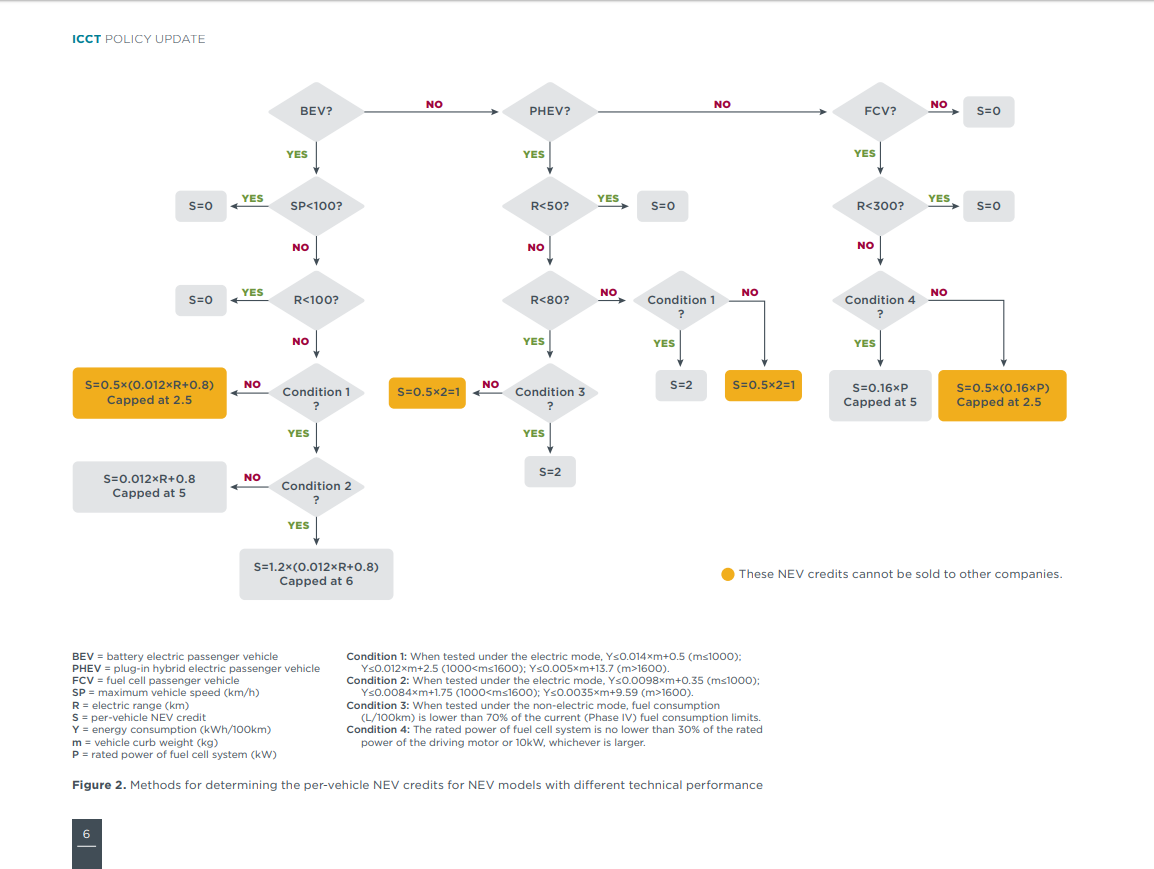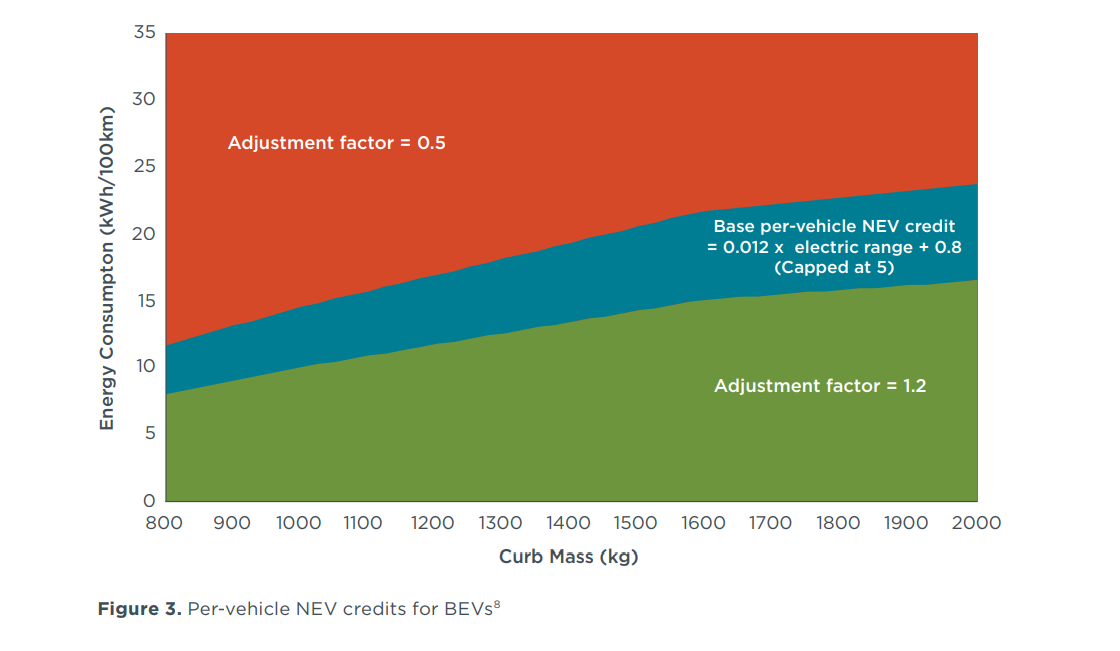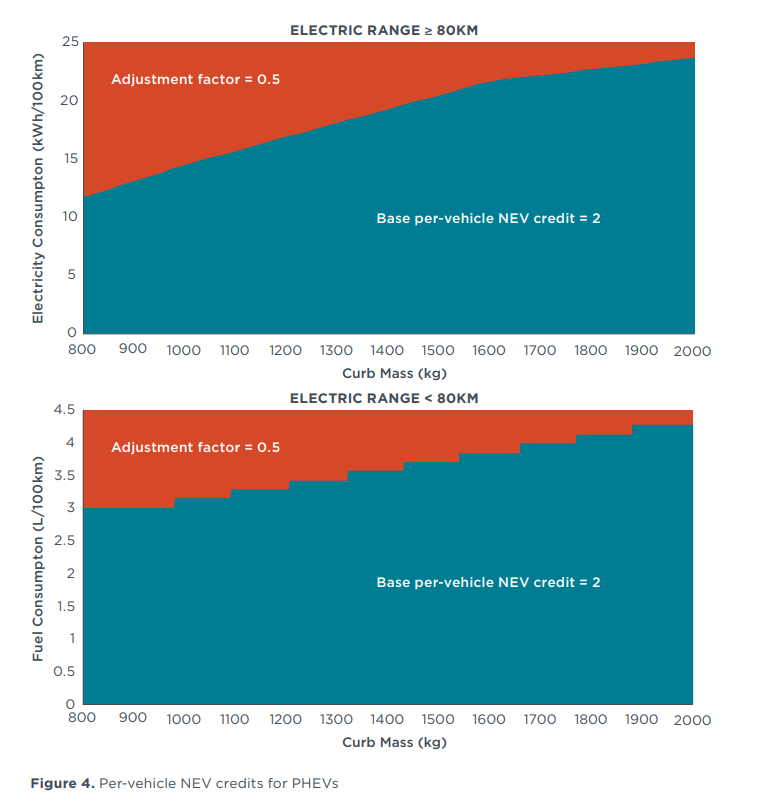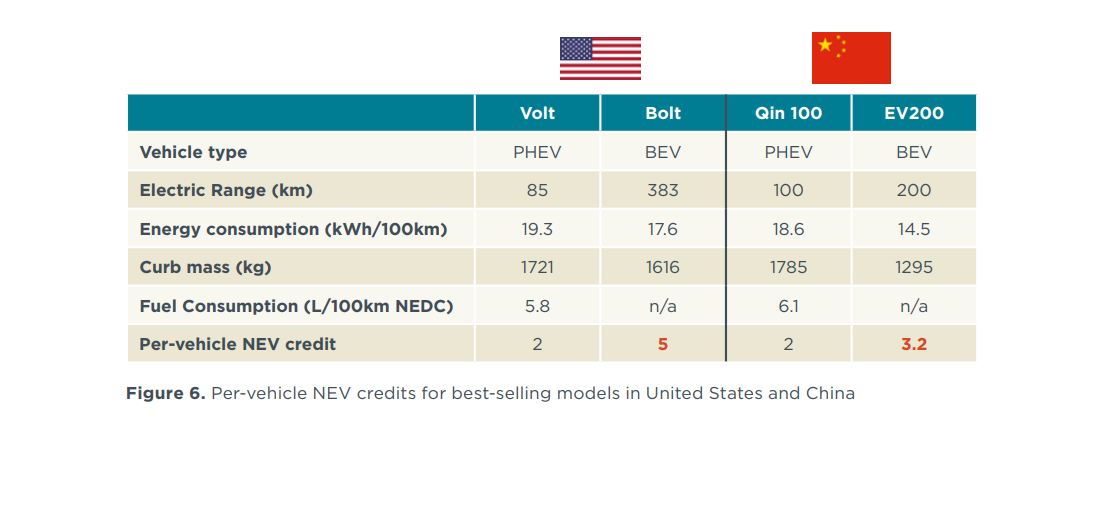Program of China "Cars with new energy sources." What to expect in 2019

Link to photo
On the eve of the new year, I would like to remind you, but for some it will be new information that from 2019, quotas on car sales (passenger cars, utility vehicles and minivans) are introduced in the framework of the program “New cars sources of energy. " So, next year, car companies or importers should fit into the 10% quota of sales of plug-in electric cars. If they are not achieved, they can be bought from other auto companies, or, in extreme cases, penalties (the relevant ministry may prohibit the production of new models until they meet certain standards for fuel consumption).
First you need to understand what the program "Cars with new energy sources" is (conventionally we think of an abbreviation - ANIE, in the original New Energy Vehicle (NEV)). The California program “Vehicles with zero emissions” was taken as a basis, but with certain changes, the purpose of which is to promote vehicles with new energy sources and to comply with strict standards on the level of fuel consumption of vehicles.
As in the California document, the PRC provides for conditional loans (quotas), and not the car sales themselves. The current program affects the next two years, so in 2019 the year of ANIE loans should be 10%, and in 2020 - 12%. What will happen after - is not yet known. The ANIE includes plug-in hybrids, electric vehicles with batteries, as well as electric vehicles with fuel cells. Depending on the performance of such electric vehicles, can be issued from 1 to 6 credits for 1 unit. That is, 10% of loans can range from 1.67% to 10% of sales of ANIE. There are also minimum conditions under which loans can be issued, and can also be used for resale to other manufacturers. With ANIE loans, you can cover the shortage of loans for the total fuel consumption of cars of a separate car company.
')
If a company sells less than 30 thousand cars a year, then there is no need for it to overcome ANIE quotas, only to comply with the fuel consumption policy.
Below is the algorithm for obtaining ANIE quotas

* The image is clickable, but the transition will reset new messages if you click back
BEH - electric car with battery;
PHEV - plug-in hybrid;
FCV - electric vehicle on fuel cells;
SP - maximum speed (km / h);
R - power reserve on the battery (km);
S - ANIE quotas for 1 car;
Y is the flow rate (kWh / 100 km);
m - curb weight (kg);
P is the power of the fuel cell system (kW);
Condition - condition
Condition 1: test in electric mode:
- Y≤0.014 × m + 0.5 (m≤1000);
- Y≤0.012 × m + 2.5 (1000 <m≤1600);
- Y≤0.005 × m + 13.7 (m> 1600).
Condition 2: test in electric mode:
- Y≤0.0098 × m + 0.35 (m≤1000);
- Y≤0.0084 × m + 1.75 (1000 <m≤1600);
- Y≤0.0035 × m + 9.59 (m> 1600).
Condition 3: the test is not in electric mode, fuel consumption (l / 100km) is below 70% of the current fuel consumption limits (according to the 4th stage (2016-2020) of the policy for each car company).
Condition 4: the rated power of the fuel cell system is not less than 30% of the rated motor power or 10 kW (whichever is greater).
Schematically below shows the options for charging ANIE quotas for each type of car:
Electric vehicles with battery

Plug hybrids

Fuel cell electric vehicles

On the example of Model 3 from Tesla, I propose to calculate how many points to get.
Take, for example, a model with an average and maximum mileage (Performance version). Here is the flow data.
Limit 1: speed - 201 and 249 (km / h) - both cars exceed the condition by 2 times - we go further;
Limit 2: power reserve of 418 and 499 (km) - 4-5 times more (it is worth noting that the Chinese use the European standard, and it is more loyal, in any case - the 2nd barrier is overcome);
Condition 1. The curb weight of the 1st model is 1671 kg, and the second is 1847 kg, which means you need to use the last formula of the condition
Y≤0.005×m+13,7 (m>1600) .Consumption:
- 27 kWh / 100 miles = 16.77 kWh / 100 km;
- 29 kWh / 100 miles = 18.01 kWh / 100 km.
=>
- 0.005 * 1671 + 13.7 = 22.059;
- 0.005 * 1847 + 13.7 = 22.935.
In both cases, the estimated flow rate is higher than the actual, which means that Condition 1 is fulfilled and we pass off the calculation of points when you can get a maximum of 2.5 points.
Condition 2. Again, the calculation depends on the curb weight, so choose the 3rd formula:
- 0.0035 * 1671 + 9.59 = 15.4418> = 16.77 - the condition is not met;
- 0.0035 * 1847 + 9.59 = 16.0546> = 18.01 - the condition is not met.
Due to the fact that the condition is not met, we can no longer get the maximum 6 points for 1 car. Now it is necessary to calculate how many points we can get from the maximum 5 using the following formula:
S=0,012*R+0,8.- 0.012 * 418 + 0.8 = 5.816;
- 0.012 * 499 + 0.8 = 6.788.
In both cases, we get 5 points. With this formula, b and 350 km were enough, that is, the basic Model 3, if it comes out, then it will just be enough to get 5 points to get 6, you need to at least reduce the flow rate by about 2 kWh / 100 km . But most likely this will not happen.
You can still take Hyundai Ioniq Electric .
Cruising range is 199 km, maximum speed is 185 km / h, curb weight is 1420 kg, consumption is 15.53 kWh / 100 km.
Condition 1: 0.012 * 1420 + 2.5 = 19.54> = 15.53 - the condition is fulfilled;
Condition 2: 0.0084 * 1420 + 1.75 = 13.678> = 15.53 - the condition is not met.
S = 0.012 * 199 + 0.8 = 3.188 (3.8 - if you take the 250 km of the European cycle).
That is, at the moment, even the most efficient electric car is not able to take all 6 points. Some tough rules. And they are entering the other day. This is a hint that extra car loans from manufacturers of electric cars should not be expected of car manufacturers on the engine. It is very expensive to buy all the loans from ANIE; moreover, not all ANIE loans can still be sold. Without fail it will be necessary to switch to electric cars themselves, otherwise - certain restrictions.
Also, there are separate calculations for 2 plug-in hybrids and electric vehicles with batteries (USA and China).

What is the calculation of the authorities in view of such a program? 3% in 2019, the share of sales of plug-in electric vehicles, and in 2020 - 4%.
I want to remind you that in the first 11 months of this year a share in the region of 4% has already been reached. That is, while the document was prepared and approved at the beginning of this year, the plans have already been fulfilled and exceeded 2 years before its end. Yes, by 2020 they are counting on 5 million units of plug-in electric vehicles, this will be a little more difficult. In any case, the current program is scheduled only for 2 years, and further - there is no data. I suppose that in 2025 there will be not 20% of credits, but already sales. The bar is high, but the pace is not small.
Those interested in reading the original document can find it here .
Supplement for calculations.
When the option of calculating points for the Model 3 was considered, I took the American rating system EPA, but I myself wrote that the Chinese use the more “loyal” European NEDC system. As comrade zilm correctly noted, this is a bit incorrect.
The British site found information on the costs of 2 models with less consumption and this is what happened in this case:
Consumption:
- 240 W * h / 1 mile = 14.91 kW * h / 100 km;
- 255 W * h / 1 mile = 15,84 kW * h / 100 km.
Condition 2. Again, the calculation depends on the curb weight, so choose the 3rd formula:
- 0.0035 * 1671 + 9.59 = 15.4418> = 14.91 - the condition is satisfied;
- 0.0035 * 1847 + 9.59 = 16.0546> = 15.84 - the condition is satisfied.
After that we use the following formula
S=1.2×(0.012×R+0.8) :S = 1.2 * (0.012 * 410 + 0.8) = 6.864; - model with average run
S = 1.2 * (0.012 * 458 + 0.8) = 7.555; - model with maximum mileage
S = 1.2 * (0.012 * 350 + 0.8) = 6; - the base model (if it comes out and there will be an expense at which Condition 2 will be fulfilled.)
If recalculated in a similar way, then all Model 3 will receive 6 credit points each. If we take the Korean, then there the consumption turned out to be 14.29 kWh, and Condition 2. will not be fulfilled.
However, it should be understood that this is not official data and how I will count the Chinese, the final expense and points will be released.
Source: https://habr.com/ru/post/434822/
All Articles